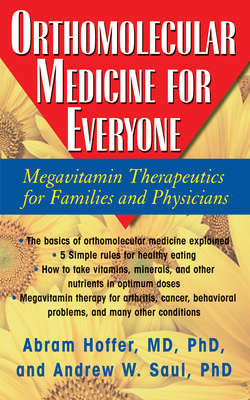Читать книгу Orthomolecular Medicine for Everyone - Abram Hoffer M.D. Ph.D. - Страница 18
WHAT KIND OF FOODS DO WE EAT?
ОглавлениеIn sharp contrast, modern food to a large degree, as consumed by most people, can be described as: artifact, dead, toxic, monotonous, exotic, and surplus (overly abundant). Our ancestors ate more nutritiously because they had no choice. In the same way, animals eat wisely when they have no choice. When our ancestors began food technology by inventing fire and cooking, they could not have foreseen how this would eventually destroy the quality of our food. But we do know better. Yet, the professionals to whom society entrusted the quality of our food, the physicians and the nutritionists, have failed to behave responsibly, often advocating junk diets when they knew this was wrong. Society needs new professionals who understand the connections between good food and health, between sick food and disease.
Artifact—Food is fractionated. The better or more nutritious fractions are discarded or fed to livestock. The protein, fat, and carbohydrate are isolated and then recombined into material that looks, smells, and tastes like food but is not. It is possible to make a caviar look-alike from starch, black dye, and salt. No natural food is safe from exploitation. Fish is now being processed to appear as if it were another, more desirable, seafood. Artifacts do not contain the nutrients present in the original food and often contain additional chemicals.
Dead—Modern food has to be stored because there is such a long distance between the farm and the kitchen. Store-bought food must be kept free of bacteria and fungi and its enzymes must be removed or suppressed; this is difficult to do with whole food. Thus, it is easier to store white flour than whole-wheat flour. To be prepared for storage, food may have to be heat-treated, pasteurized, canned, cooled, or frozen. The most devitalized foods keep best, and the longer a food is stored, the less nutritious it becomes.
Toxic—Modern food, especially processed food, contains chemicals used to enhance preferred qualities, such as taste, smell, color, stability, etc. The best known are the cosmetic additives. But processed foods also contain trace or hidden additives, chemicals used in preparing the artifacts that are used in preparing the final processed food artifact. The final food processor is probably not even aware that these additives are present, and they are not listed on the final label. Modern foods are not toxic immediately, although when one sees how sugar can turn a normal child into a hyperactive tyrant in an hour, it is difficult not to consider it as toxic as any poison. Modern foods are insidious and they can destroy over many years. That is why it is so difficult to establish a cause-and-effect relationship between diet and specific diseases.
Monotonous—The high-tech food industry depends on having large amounts of a few plant foods as our staples, including sugar, wheat, oats, corn, milk, and cheese. These few food sources are reworked and recombined into an amazing variety of processed foods. A modern supermarket may contain up to 20,000 different items. There may be a hundred different boxed breakfast cereals, yet all are made from sugar, wheat, oats, or corn, plus additives. It is this monotonous, repetitive attack on our bodies by the same artifact foods that is responsible for a huge proportion of all allergies.
Exotic—These are foods grown in one climatic area and sent to another area, usually north or south. Bananas are exotic to Canada, while flaxseed or wheat in the Sahara would be equally exotic. There is some reason to believe the most dangerous movement is from tropical to cold climatic areas, because tropical plants do not contain enough of the omega-3 essential fatty acids needed in the cold areas.
Surplus—Not only is our food bad, but we have too much of it. As many as half of the people in high-tech societies are obese. The problems of obesity and the other diseases caused by excessive consumption of food, especially sugar, are enormous. The term “sugar metabolic syndrome” is used to describe these illnesses.
